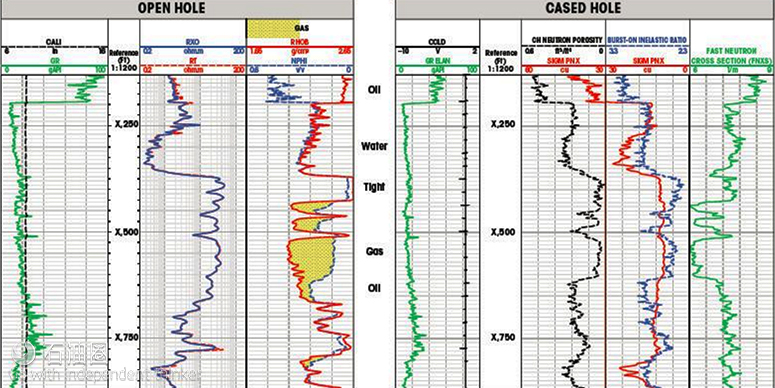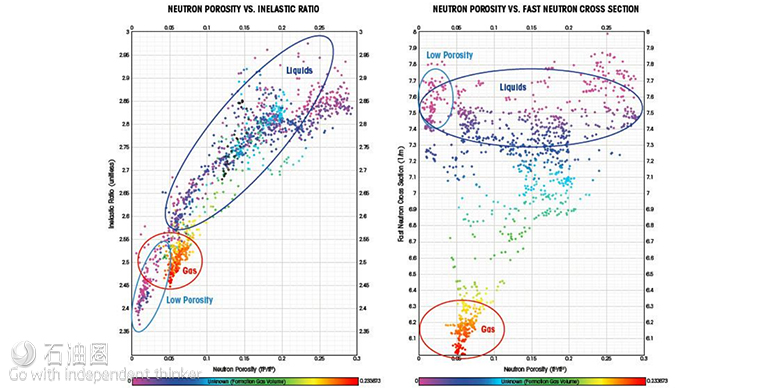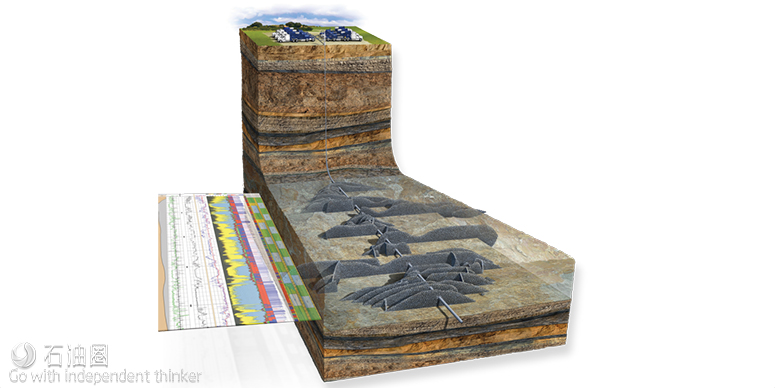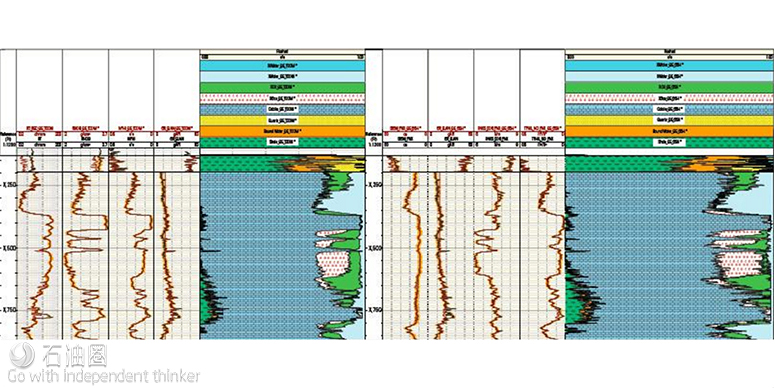Industry Article: The Missing Piece of Information
New fast neutron cross-section measurement for gas volume quantification enables full cased-hole formation evaluation.
In the early 1960s cased-hole measurements consisted of sigma logs, which were sensitive to the volume of chlorine, primarily as sodium chloride, in a formation and were used to calculate formation water saturation. Pulsed neutron logs also were capable of measuring liquid-filled porosity, and a standard gamma ray log could be run in either open hole or cased hole as a lithology indicator. In the 1970s development of the first carbon/oxygen logs made it possible to measure oil saturation when the formation water was fresh or the salinity was unknown. Along with the carbon/oxygen measurement, petrophysicists also were able to quantify elemental concentrations of the basic elements that make up the rock matrix such as the relation of silicon to quartz, calcium to calcite and iron to clay volume.
This suite of cased-hole measurements has been greatly improved over the past 40 years through many generations of tools, but the intrinsic physical measurements have remained unchanged and were still missing one critical piece of information—a porosity measurement that is accurate in the presence of formation gas or can be combined with the neutron porosity, as is done with bulk density in open hole, to measure porosity when gas is present in the formation. In the absence of this porosity measurement, primary formation evaluation in cased wellbores can be ambiguous unless there is external knowledge of porosity, such as from openhole logs.
Today operators often are interested in evaluating newly drilled wells after the wells have been cased. In many situations the decision to case a well already has been made by the time the well reaches total depth. Cased-hole formation evaluation is an appealing option from both an economic and safety standpoint because it eliminates rig costs as well as the risks associated with having logging tools in an open borehole, particularly in long horizontal sections.
New cased-hole porosity measurement
The inability to measure formation gas has been the main challenge in conducting primary formation evaluation in cased holes. Since the early 1960s openhole evaluation has used gamma-gamma density measurements to identify gas-bearing formations with the traditional neutron-density gas crossover effect (Figure 1).
Figure 1. The far-right track displays the FNXS measurement, which is uniquely sensitive to gas. The classic gas crossover effect, shaded in yellow, easily distinguishes gas-filled porosity from liquid-filled porosity in open hole and correlates well with the low FNXS readings. Sigma, neutron porosity and the inelastic count rate ratio all read about the same in the low-porosity zones as they do in the gas-bearing zones. However, the FNXS reads about the same in low-porosity zones and liquid-filled porous zones but reads much lower in the presence of gas for readily identifying gas-filled porosity.
To fill this 40-year information gap, the first new intrinsic measurement for cased-hole formation evaluation was developed and introduced by Schlumberger in 2015. Known as the fast neutron cross section (FNXS), this measurement is more related to atom density than to bulk density. Gas volume is measured on the basis of inelastic cross sections that have little variance between elements, unlike capture cross sections. Because rock, oil and water have a very similar number of atoms per unit volume, the FNXS measurement has about the same response to rock as it does to liquids. However, gas has a very low atom density and, therefore, a distinctively low FNXS. Because the new measurement is uniquely sensitive to gas, gas volume and total porosity can be solved by using it in combination with other cased-hole measurements.
The FNXS measurement also can be used to obtain total porosity using only data acquired in a cased well- bore by combining the liquid-filled porosity determined from neutron porosity with the FNXS gas volume. Thus, the FNXS measurement replaces the need for a density measurement and is far more robust than a cased-hole density measurement.
How FNXS works
FNXS is measured with an innovative pulsed neutron tool that also can make traditional sigma, porosity, carbon/oxygen and capture spectroscopy measurements. All of these capabilities in a single tool mean that a complete formation evaluation can now be performed in cased holes with a single piece of hardware.
Figure 2. The plot on the left shows the close similarity between the inelastic ratio and neutron porosity, which makes it difficult to combine the two measurements to identify gas. The plot on the right compares neutron porosity with FNXS measurements. The FNXS response to gas is unique and independent of porosity. The similarity of the FNXS measurement for liquid-filled porosity and rock makes it easy to identify gas-bearing intervals.
Figure 3. In this comparison of petrophysical analysis conducted in open hole (left) with the same analysis of data acquired in a cased hole (right), the calculated porosity and fluid volumes match well even though the interpretations are based on different sets of input data. The result on the left was achieved using only data acquired in cased hole.
To demonstrate how the FNXS works, the cased-hole data on the right side of Figure 1 matches well with the openhole data shown on the left. Sigma correlates with resistivity, and gamma ray and neutron porosity from openhole responses match the cased-hole responses. However, there is no match for density or, more importantly, there is no unique response difference between a gas-bearing formation and a low-porosity zone. The newly developed FNXS measurement shown on the far right of the cased-hole log provides this missing piece of information. Notice how the FNXS reads lower in the intervals where gas is indicated by the neutron-density crossover effect, shaded in yellow, on the openhole data. Furthermore, the response is the same in a liquid-filled porous zone and in a low-porosity formation, which proves that this measurement is uniquely sensitive to gas.
Figure 2 illustrates how the FNXS measurement can be used to identify formation gas without relying on openhole or external information. The plot on the left demonstrates the relationship between the inelastic ratio and neutron porosity. Although they do not correlate perfectly, both the ratio and porosity have a very similar response in gas as they do in low-porosity intervals. The plot on the right demonstrates how the FNXS uniquely responds to gas and has almost no sensitivity to changes in porosity as long as the porosity is liquid-filled.
In Figure 3 the cased-hole analysis derived liquid-filled porosity from neutron porosity whereas gas volume was derived from the FNXS using any standard interpretation model that incorporates traditional cased-hole measurements. Adding the liquid-filled porosity to the gas volume obtains the same porosity as was measured using the neutron and density measurements shown in the openhole analysis. Water saturation was determined from resistivity in open hole and from sigma in cased hole. If the formation water salinity is too fresh or is not known, the carbon/oxygen ratio or total organic carbon could be used to determine oil saturation. However, in this case, the formation water was salty, thus making it easy to use sigma for saturation.
The cased-hole interpretation could have been generated from traditional cased-hole logs that are combined with an openhole density measurement, but the break- through with the FNXS technique is that no openhole data are required.



 石油圈
石油圈

